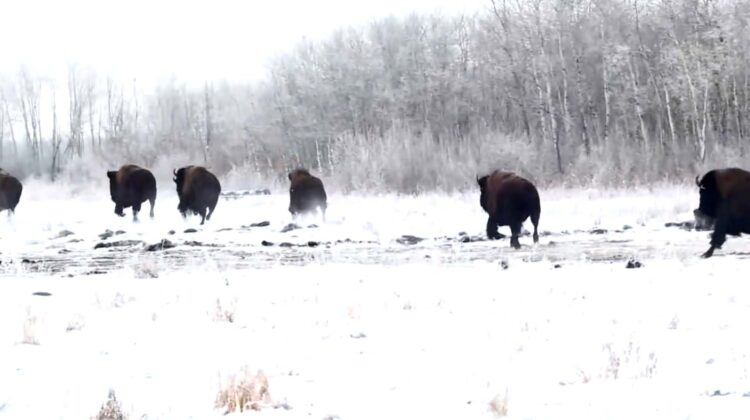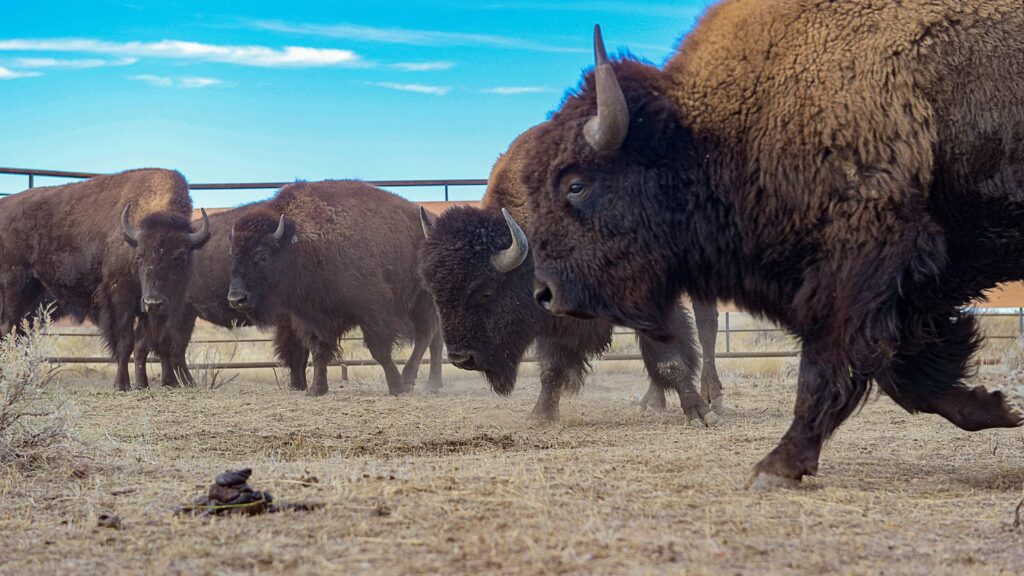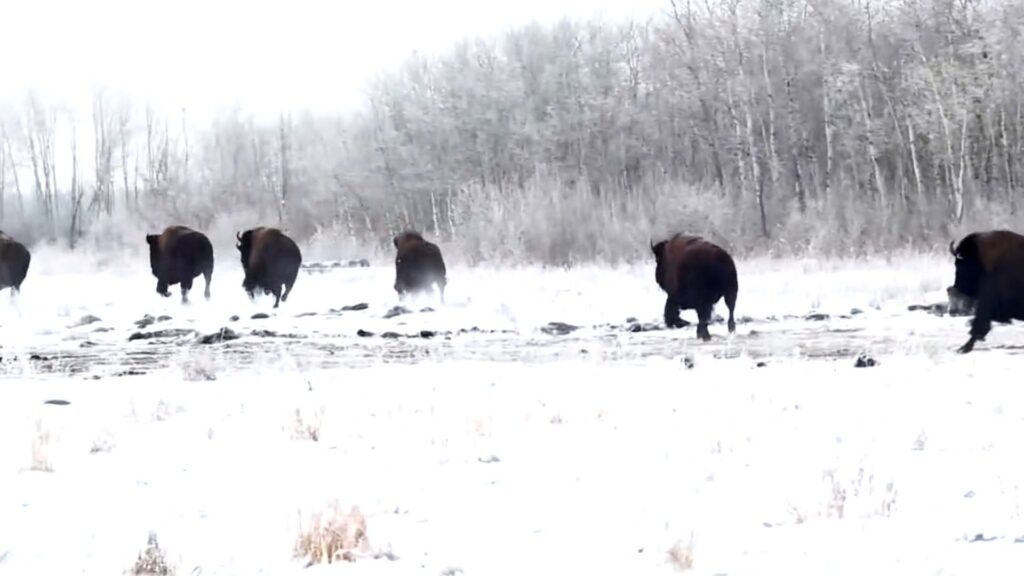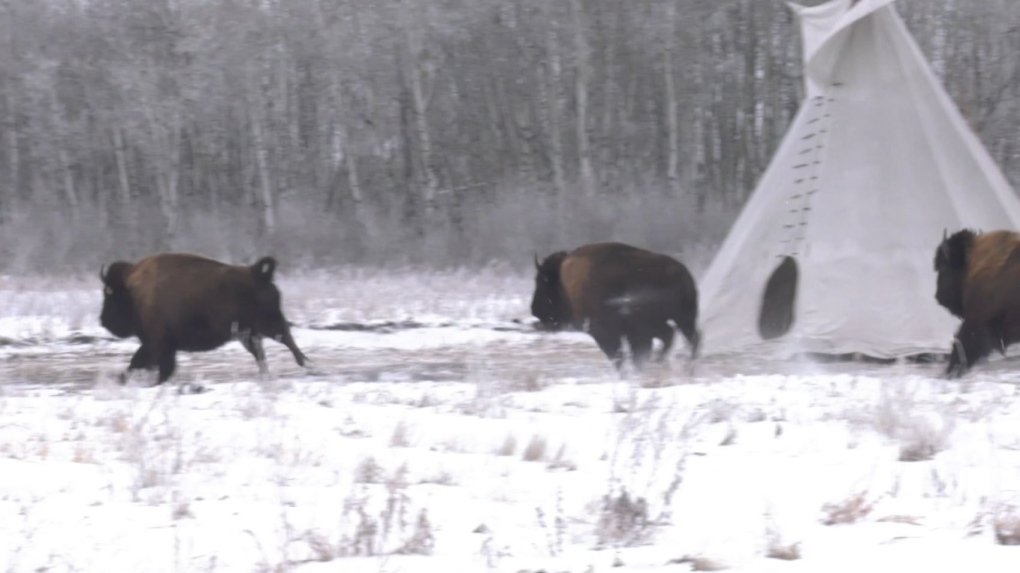
On a 365-hectare woodland area on Cote First Nation, 265 kilometers east of Regina, Saskatchewan, twenty-four buffalo, including two bulls, have made their home.
Buffalo have roamed the Treaty 4 land near Kamsack for the first time in 150 years.

Hundreds of people gathered on Monday to celebrate the return of the revered animal, which had been driven to extinction by settlers after millennia of supplying food and shelter to the Plains people.

Chief George Cote has been working on a return to Cote for the past four years. According to him, First Nations people have battled hard to get to where they are now.
He told APTN News, “We’re incredibly glad that the buffalo is rising in numbers as a result of what happened in history.” “It’s something that everyone in Canada, even non-First Nations people, should be aware of.” We’re quite happy of how First Nations and non-First Nations collaborated to bring the buffalo home.”
The buffalo were transported nearly 900 kilometers to their new habitat as a show of reconciliation. An Alberta rancher and two Christian charity gave them.

Tearfund Canada and Loko Koa, a Saskatchewan-based Samoan youth ministry. Cote is the province’s third First Nation to benefit. Herds have established themselves among the Peepeekisis and Zagime First Nations.
According to Cote, there have been many terrible years, but First Nations people, like buffalo, are resilient.

So, what’s the difference between bison and buffalo?
Bison have larger skulls and humps on their shoulders than buffalo. They have thick coats and beards, which they shed in the spring and early summer. Another easy method to recognize the difference between a buffalo and a bison is to examine its horns. Cape buffalo horns have a thick, helmet-like base and curve down, then back up, like a handlebar mustache.

The horns of a water buffalo are broad, long, and curved in a crescent, but the horns of a bison are pointy and shorter than those of a buffalo.
